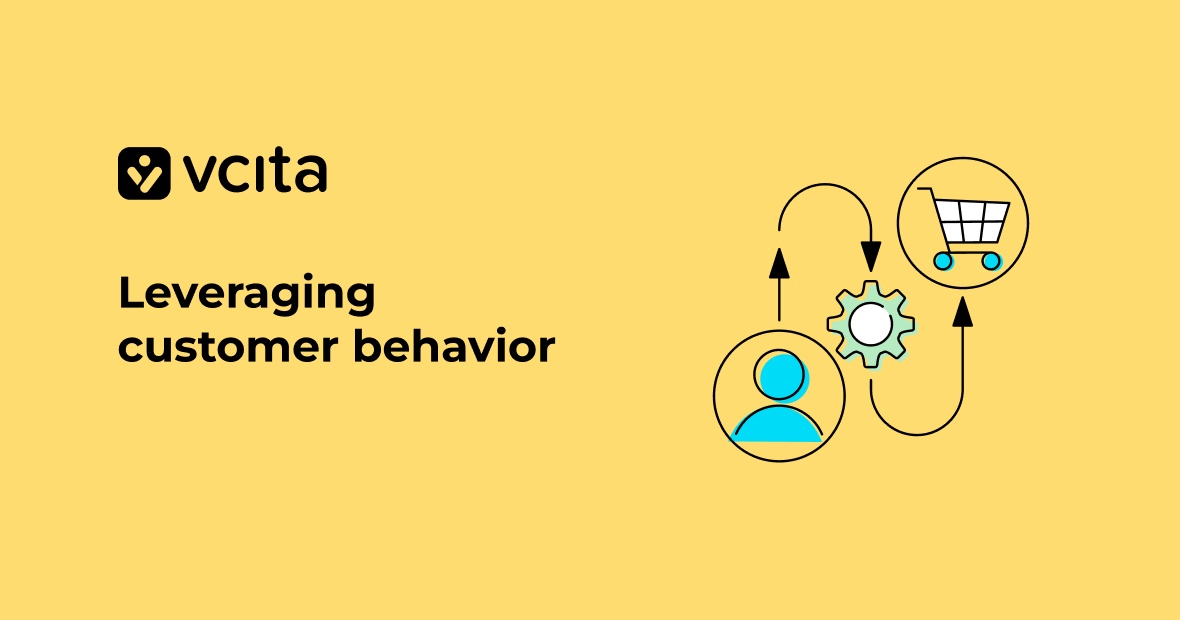Every small business owner wishes they could read their customers’ minds. If only you knew exactly what they are looking for from a service business like yours, and could offer precisely the range of services that they want and need. Your business would be able to grow so much faster and farther with those kinds of insights.
Fortunately, that’s exactly what customer behavior analysis can deliver. Keep reading to find out what customer behavior analysis is and how you can implement it in your business.
What is customer behavior analysis?
Customer behavior analysis is like a deep dive into how your customers interact with your company. It involves crunching lots of data to derive insights into what motivates them to buy from your business, and it’s the key to unlocking your business’s growth potential.
Customer behavior analysis leverages qualitative research like surveys, interviews, and focus groups, plus quantitative data from your website, social media, and sales metrics to create a clear picture of the customer experience. You can see how people find your business, what they like about your product or service, their purchasing motivations, and more.
How does customer behavior analysis help your business?
Customer behavior analysis is a strategic tool, not an isolated tactic, because putting the customer first is key to your entire business success. When you really know your customers – their desires, values, and behaviors – you hold the power to transform your business into their trusted partner and an industry leader.
With these insights, you can make data-driven decisions to improve the customer experience at every touchpoint. You’ll know how to reach your best customers through targeted marketing, develop ideal customer profiles to grow your customer base, and build a customer-centric culture that keeps customers coming back for more.
For example, behavioral targeting uses behavior analysis data to serve ads to those most likely to convert. Measuring customer experience helps you identify weak points in the customer journey, so you can make interactions as frictionless as possible. Psychological pricing means setting prices ending in 5 or 9, which studies show customers perceive as a better value.
How to measure and analyze customer behavior
To really gain insights into your customers, you need to measure and analyze their behavior. This allows you to see how they truly interact with your business so you can improve their experience. Here are the best ways to go about this task.
-
Conduct surveys and interviews
Surveys and interviews provide qualitative data that gives you a sense of how customers feel. They don’t have to be long — you can just send an email with a few questions asking customers about their experiences with your company, like what do they love and what needs improvement?
-
Track behavior on your website
The order in which customers navigate your site, which content they choose to view, and how long they spend on different pages can be very revealing. Use tools like Google Analytics to monitor behavior and get a glimpse into their preferences.
-
Study purchase patterns
Look at what customers buy, how much they spend, and how often they shop with you, and see if certain products serve as gateways to bigger purchases or to greater customer lifetime value. Pay attention to the impact that pricing has on their buying decisions so you can refine your psychological pricing decisions.
-
Monitor social media
See what customers say about your brand on social platforms, because that gives you a peek into their priorities and concerns. Look for common themes, pain points, and ways you can improve, but you should also engage with them by liking and commenting on their posts. All this helps you build a customer-centric culture where you put customers first.
-
Improve your business offering
Now that you have insights into your customers’ experiences, needs, and motivations, use that information to refine your business operations and offering. Enhance their experience, develop new products and services that better meet their needs, and improve your marketing to build loyalty.
Creating detailed customer profiles
Customer behavior analysis is an important step in the process of building ideal customer profiles, or ICPs. This is a strategy that helps you understand your clients better so that you can ramp up the actions that increase conversions and sales, develop more relevant products and services, and deliver a customer-centric culture.
To get inside the mind of your customers, you need to gather important details about them and analyze that information. Behavioral targeting through online data collection is one way to learn more about your customers’ habits and preferences. You can also measure customer experience by sending surveys and reviewing reviews. Look for data points like:
- Demographics: Age, gender, income level, location.
- Psychographics: Interests, values, lifestyle choices.
- Transactional info: What they buy, how much they spend, frequency of purchases.
With this data, you can then group customers into ideal customer profiles. For example, you may have profiles for:
- Loyal customers: Those who buy frequently and rarely complain.
- Big spenders: Customers who make large purchases, even if less often.
- Deal hunters: Very price-sensitive customers who are always looking for bargains.
These profiles allow you to tailor your marketing to different segments of your customer base, so that you can offer each segment the customer experience that they really want. For example, you might offer loyalty program reward points to loyal customers, alert deal hunters to your major discounts and sale items, and send emails about exclusive early access to new collections or VIP treatment bundles to big spenders.
ICPs can also help you apply psychological pricing more effectively to maximize sales. This is a way of fixing prices that takes into account how different customers value your products. Price sensitive customers may prefer “charm prices” like $29.99, while status-conscious customers are less deterred by round numbers.
Customer behavior analysis can be the key to business success
Analyzing customer behavior does require effort, but the rewards of increased sales, reduced churn, and improved satisfaction make it well worth your time. After all, understanding customers is how successful businesses are built. Customer behavior analysis helps you create detailed customer profiles, leverage tactics like targeted marketing, and improve your offerings, marketing, and customer service to grow your business and revenue.





